Throughout the 2020-21 season, the Carolina Hurricanes’ goaltending was a major bright spot in the team’s success, and you could argue that they’d received some of the best performances in franchise history from their tandem trio. The emergence of long-awaited youngster Alex Nedejkovic – which led a lot of supporters to believe that’d he’d become part of the future for the team – combined with the steadiness of holdovers Petr Mrazek and James Reimer gave the team flexibility and consistency at the league’s most important position.
After a disappointing second-round playoff exit at the hands of the Tampa Bay Lightning, the Hurricanes decided to go in an entirely different direction in their crease – a complete overhaul that saw all three of their holdovers at the position move on. There’s obvious risk involved when you decide to do a complete makeover at a position that the team seemed to be in a generally comfortable spot with, but the front office had stressed wanting to acquire more of a true veteran presence at the position and a proven track-record of success. We’ll have a look at what the both the departures and acquisitions mean to the team as a whole, heading into a season where the team hopes to become a true Stanley Cup contender.
Departures
Petr Mrazek
Mrazek will forever be entrenched in the hearts of Hurricanes fans, after his arrival in the summer of 2018 brought stability to a positional group that had plagued the team with mediocrity for nearly an entire decade. Over three seasons in Raleigh, Mrazek posted a 50-32-8 record with a 2.48 Goals Against Average (GAA) and a .911 save percentage (SV%). Mrazek became a fan favorite with his aggressive and mass-chaos goaltending style, and he was a major contributor towards the Canes ending their nine-year playoff drought.
Though rumors swirled that the Hurricanes were trying to re-sign Mrazek, he ended up signing a three-year deal with the Toronto Maple Leafs, thus beginning a new era for ‘Canes goaltending. And although his super aggressive style got him in trouble at times, he almost always gave the team a chance to win and really had the ability to steal games for them.
Alex Nedeljkovic
The team’s decision to move on from Nedeljkovic was not well received throughout the fanbase, and it’s quite easy to understand why. Since the Hurricanes drafted him back in the second round in 2014, he’d been heralded as the goaltender of the future for the team, and finally looked to be making good on the potential after his breakout rookie season in 2020-21. He was nominated for the Calder Trophy, and led the NHL (amongst qualified goaltenders) in both GAA (1.90) and SV% (.932).
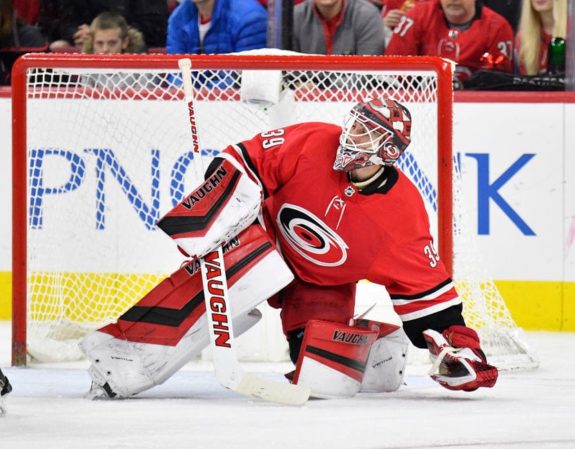
After seven years of patience had finally seemed to pay off, the consensus around the Hurricanes’ fanbase, and the general hockey media, was that the team had finally found the true franchise goaltender that they’d been searching for since the Cam Ward era. Nedeljkovic, still only 25, showed that he had the ability to lead a team in net. The Canes’ front office had a differing option, though, and they opted to trade him to the Detroit Red Wings for a third-round pick, claiming that the team wanted more of a veteran presence in goal. And while that isn’t necessarily a bad strategy, if the team’s goaltending falters next season there will be a lot of fingers pointed at this trade, specifically around why you’d move on from a blossoming 25-year-old netminder in favor of older goaltenders surrounded by question marks.
James Reimer
With Nedeljkovic’s emergence combined with the return of Mrazek from injury in mid-April, Reimer spent the majority of the stretch-run in the 2020-21 season as the third goalie on the roster. Over the course of the season, he appeared in 22 games and secured a 15-5-2 record, which was a testament to the stable goaltending he provided throughout the season. Despite never being flashy, the word I’d always used to describe him was “solid,” and it was difficult to find any faults in his overall game.
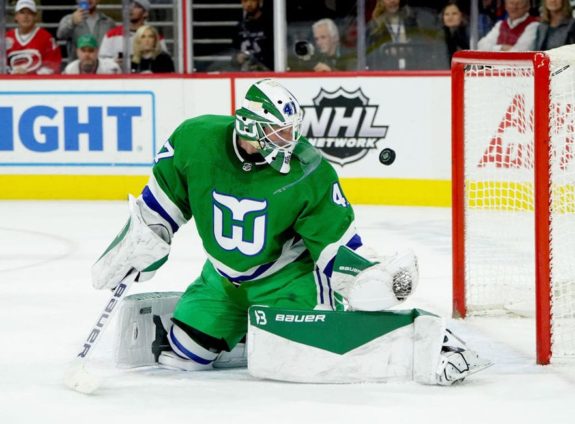
Going into the offseason, I thought it made sense to consider re-signing Reimer to continue his role as the back-up goalie, but the Hurricanes decided to go in another direction. The San Jose Sharks gave him a two-year contract in free agency, where he’ll form a tandem with the young but unproven Adin Hill. Over his two seasons in Carolina, he proved to be a consistent, trusted presence in the crease, and always gave the team a chance to win. You can’t ask for much more than that from a back-up.
Arrivals
Frederik Andersen
With the departures out of the way, now we’ll have a look at the new-look tandem in the Canes’ crease. Frederik Andersen, who was initially drafted by the team way back in 2010, figures to get the first crack at the starting job after securing a two-year deal with a $4.5M AAV per season. The team is banking on the hope that Andersen can re-gain his pre-2020 form, when he was considered amongst the upper echelon of goaltenders in hockey. Across 393 career games, he has a dazzling 226-100-48 record, with a .915 SV%.
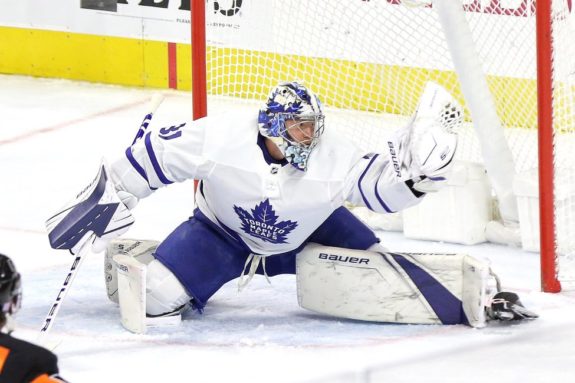
The worrisome factor of the acquisition is the fact that the Maple Leafs relied very heavily on Andersen between 2015 and 2019, with him appearing in a whopping 244 games (out of 314) across that four-season time frame. Despite strong results for the most part, there’s now valid concerns surrounding his durability and expected workload. His statistical performance took a massive dip in 2020-21 (with a .895 save percentage in 24 games), and on top of that, he dealt with nagging injury concerns throughout the season. Optimistically, you could just write last year off as a bad or unlucky season for him, but he’ll be 32 years old when the puck drops in 2021-22, and isn’t getting any younger.
Antti Raanta
On the surface, Antti Raanta has a lot of the same question marks surrounding him that Andersen does, which is what makes this potential duo so fascinating. When Raanta is healthy and on the ice, there’s absolutely no denying his talent level. Over the course of 196 NHL games, he has a spectacular 2.46 GAA and a .919 SV%. Those numbers are even more impressive when you consider the fact that he’s played on a lot of bad hockey teams, and has formed one of the best tandems in hockey over the past few seasons (with Darcy Kuemper) for the Arizona Coyotes.
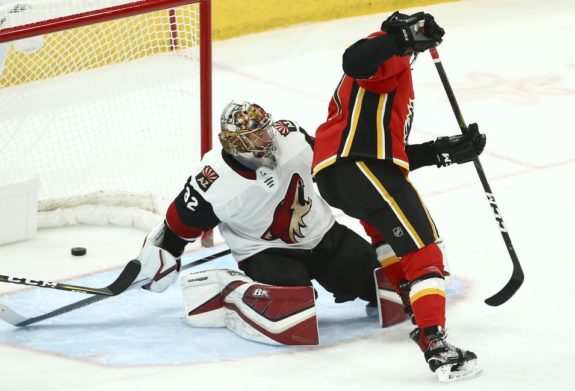
But while there’s no doubting his goaltending ability, the best ability is always availability – which is the area that’s held Raanta back over the past few seasons. He’s had some trouble staying healthy. Stylistically, there’s a lot of similarities between he and Mrazek. Both are considered undersized and rely on lateral agility, reflexes and aggression to be effective in the crease. But where he has the edge is with his overall consistency, as evidenced by his career numbers. Whereas Mrazek has the odd game where he’d be susceptible to the average weak goal, Raanta tends to really build off of his form, and can string runs together where he’s virtually unbeatable. Both guys have the odd “rough” moment, but that also applies every goaltender in hockey.
The Upside
When you analyze the overall scope of the situation from a neutral perspective, it’s hard to understand moving on from Nedeljkovic, who still has youth on his side and is far from a finished product. From the Canes’ side of things, you can understand why they’d want to opt for a more “certain” type of veteran to stabilize their crease, but it’s hard to definitively say that they found that guy in either Andersen or Raanta. While both guys have legitimate upside, the deal that the Red Wings gave “Ned” – a two-year deal worth $3 million per season – is super reasonable considering the upside that he’s shown – albeit in a limited sample size. Still, I find it hard not to consider that contract a steal, especially if he can continue to build on – or even just stay consistent – with his current level of play.
On the flip side, it’s difficult to fault the Hurricanes’ management for not truly believing in Nedeljkovic. His sample size was only 23 games and, when you factor in that his 2020-21 statistics were an outlier from every other season at any other level of hockey he’s played at throughout his career, there was a lot of risk involved in going into a new season with him as your starting goaltender, especially for a team that has Stanley Cup aspirations. I’m not sure we can sit here today and deem either of the newcomers a legitimate upgrade, especially with the question marks around both players.
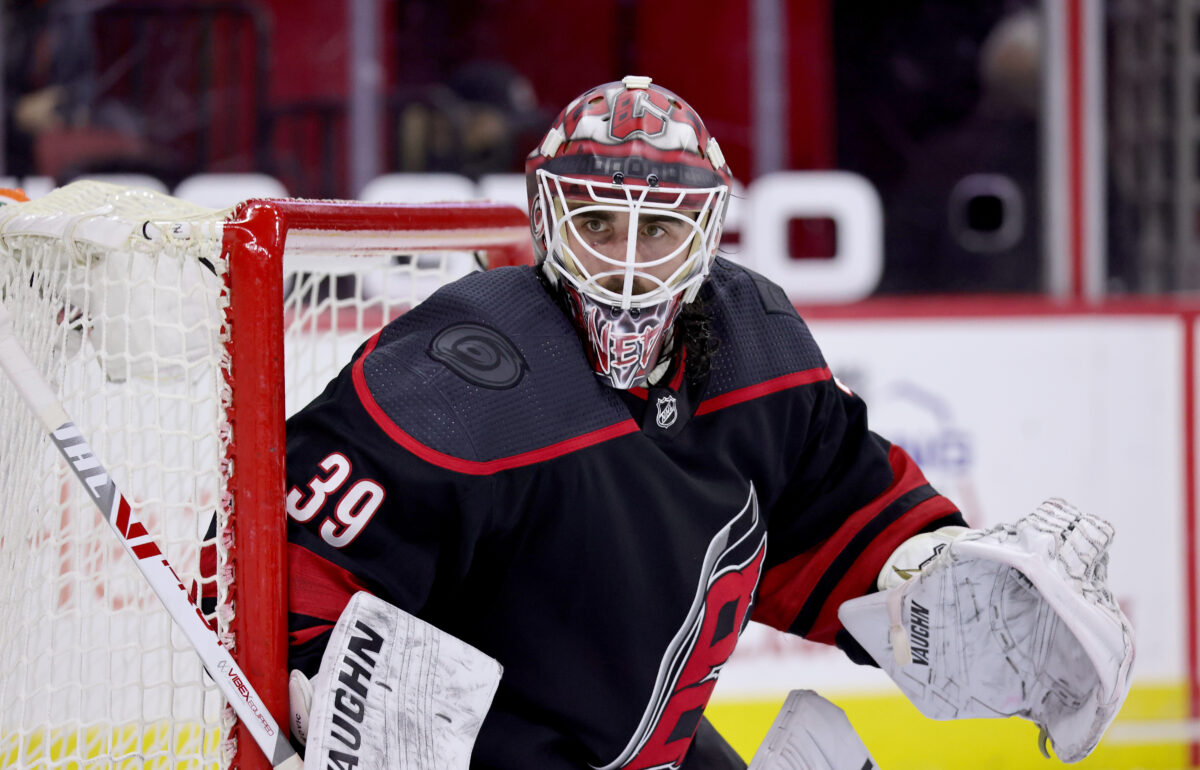
As I’ve been stating routinely throughout the offseason, my money would probably be on Raanta emerging into the starting role. He’s shown a consistent, high level of goaltending throughout his career, and there’s a lot of potential upside there behind a defense that’s unquestionably stronger than the one he had in front of him in Arizona. But the same can be said about Andersen, who’s routinely dealt with a subpar defense core in front of him in Toronto, and has the track record of being a top-10 netminder in the NHL for a large portion of the past half-decade.
Final Thoughts
As cliché as it might be to say, it’s impossible to project how the Hurricanes will fare in the crease until we see both of their new goaltenders in action. The team moved on from goalies that were riddled with both uncertainty and legitimate question marks, but replaced them with other guys that are dealing with many of the same issues. The good news is that their defensive core – even with the loss of Dougie Hamilton – remains as strong and as deep as it’s ever been, which gives the group a bit of margin for error in net.
It’s entirely possible that either Raanta and/or Andersen can re-capture the previous magic that they’ve provided in net, and if either of them are able to, the Hurricanes will be just as good (or better) in goal moving forward. Either way, the team would’ve been going into the 2021-22 season with risks involved in their crease, but there’s plenty of reason for optimism that their new tandem can provide both stability and upside at a position that’s plagued a majority of the past decade.
